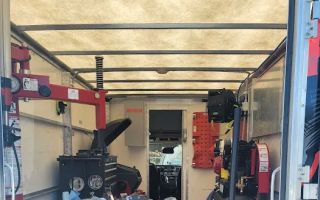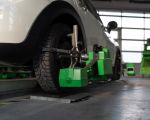- 1 - Importance-of-Checking-Tire-Pressure-During-Winter
- 2 - Step-by-Step-Guide-to-Check-Tire-Pressure-in-Cold-Weather
- 3 - Common-Tire-Pressure-Issues-During-Winter-and-How-to-Prevent-Them
- 4 - Real-World-Examples-and-Impact-of-Tire-Pressure-on-Winter-Driving-Safety
- 5 - When-to-Seek-Professional-Help-from-Rescue-and-Towing-Services
1. Importance of Checking Tire Pressure During Winter
Winter is a challenging season for drivers, with cold temperatures affecting vehicle performance in multiple ways. One critical yet often overlooked aspect is maintaining proper car tire pressure. As temperatures drop, air inside tires contracts, causing pressure to decrease. This reduction can negatively impact traction, fuel efficiency, and overall safety.
Proper tire pressure ensures your vehicle handles well on icy or snowy roads, reducing the risk of accidents. It also prevents uneven tire wear and extends the lifespan of your tires. Understanding why and how to check car tire pressure during winter is essential for every driver aiming for a smooth and secure driving experience during the cold months.

MR. TIRE INC.
2078 New York Ave, Huntington Station, NY 11746, USA
1.1 Why Cold Weather Affects Tire Pressure
Air pressure inside tires decreases approximately 1 psi (pound per square inch) for every 10°F drop in temperature. This means a tire properly inflated in fall may be underinflated in winter, sometimes without noticeable signs until performance issues arise. Being proactive with tire pressure checks avoids unexpected situations on the road.

MR. TIRE INC.
2078 New York Ave, Huntington Station, NY 11746, USA
2. Step-by-Step Guide to Check Tire Pressure in Cold Weather
Knowing exactly how to check car tire pressure during winter is straightforward but requires attention to detail to ensure accurate readings and safe driving conditions.
2.1 Gather the Right Tools
A reliable tire pressure gauge is essential. Digital gauges provide precise readings, but even a simple analog gauge can do the job if used correctly. It’s also helpful to have a portable air compressor or access to one at a nearby gas station.
2.2 Check Tires When Cold
Tires should be checked when the car has been parked for at least three hours or before driving, as heat from driving inflates tires temporarily and can lead to inaccurate measurements.
2.3 Find the Recommended Pressure
Consult your vehicle’s manual or the sticker inside the driver’s door jamb to find the manufacturer’s recommended tire pressure for winter conditions. This number often differs slightly from summer recommendations.
2.4 Measure and Adjust
Remove the valve cap and firmly press the gauge onto the valve stem. Read the pressure and compare it to the recommended level. Add air if below the recommended psi or release air if overinflated. Repeat for all four tires and the spare if applicable.
2.5 Regular Monitoring
Repeat this process at least once a month during winter, or more often if temperatures fluctuate drastically. This habit helps maintain optimal tire condition and safety.
3. Common Tire Pressure Issues During Winter and How to Prevent Them
Winter presents unique challenges for tire maintenance, and knowing common problems can help you avoid costly repairs or dangerous situations.
3.1 Underinflation
As cold air contracts, underinflated tires become common. This can lead to decreased traction and increased tire wear. Prevention includes regular pressure checks and topping off air as needed.
3.2 Overinflation
Sometimes, drivers overcompensate for cold air by inflating tires too much, causing a harsh ride and uneven tire wear. Always adhere to manufacturer recommendations rather than guessing.
3.3 Valve Stem Freezing
Moisture in the valve stem can freeze in low temperatures, causing air leaks. Applying valve stem caps and regular inspections help prevent this issue.
4. Real-World Examples and Impact of Tire Pressure on Winter Driving Safety
Take the story of a commuter in Minnesota who ignored routine tire pressure checks during a harsh winter. One icy morning, their underinflated tires contributed to loss of control on a slick curve, resulting in a minor accident. After that, they committed to checking tire pressure weekly and noticed improved handling and confidence driving in cold conditions.
Another case involved a family who used a digital gauge to monitor their tires throughout winter. When they detected pressure drops early, they avoided potential blowouts and costly roadside assistance calls. Their proactive care exemplifies how simple actions make a significant difference in safety.
5. When to Seek Professional Help from Rescue and Towing Services
Even with careful tire maintenance, emergencies happen. If you experience sudden tire failure, cannot maintain proper pressure, or get stuck in winter conditions, professional help is invaluable. Rescue & Towing offers fast, reliable services that can assist with tire repairs, replacements, or vehicle recovery in harsh weather.
Additionally, Rescue & Towing provides expert advice and quality products suited for winter car care, ensuring you’re prepared before hitting the road. Keeping their contact handy can give peace of mind during unpredictable winter drives.






























